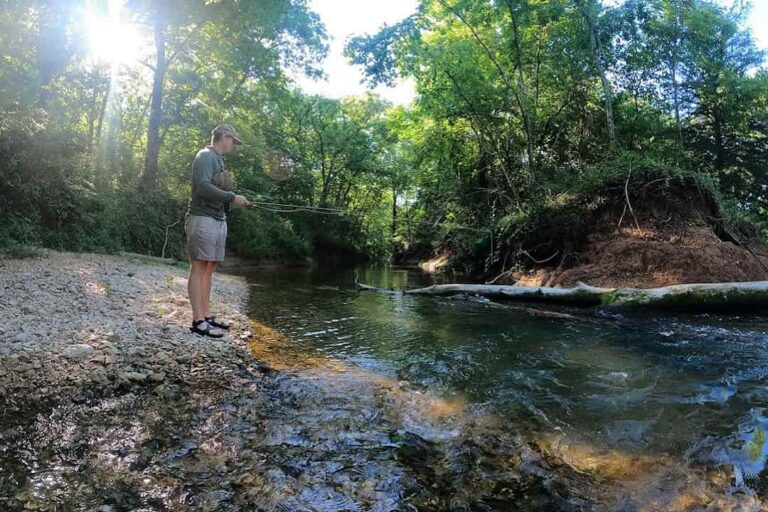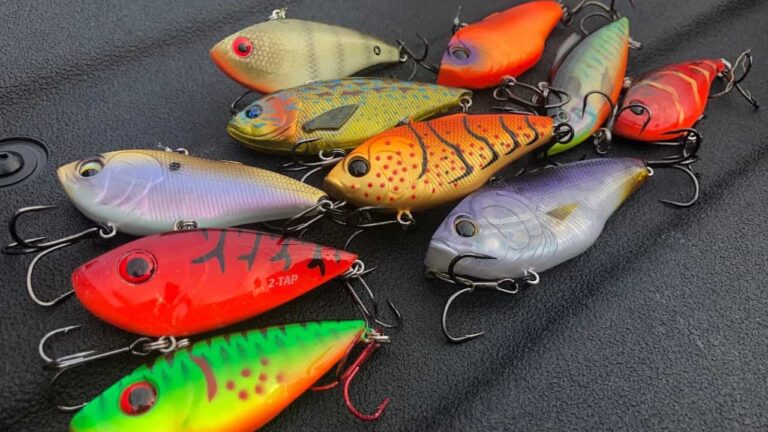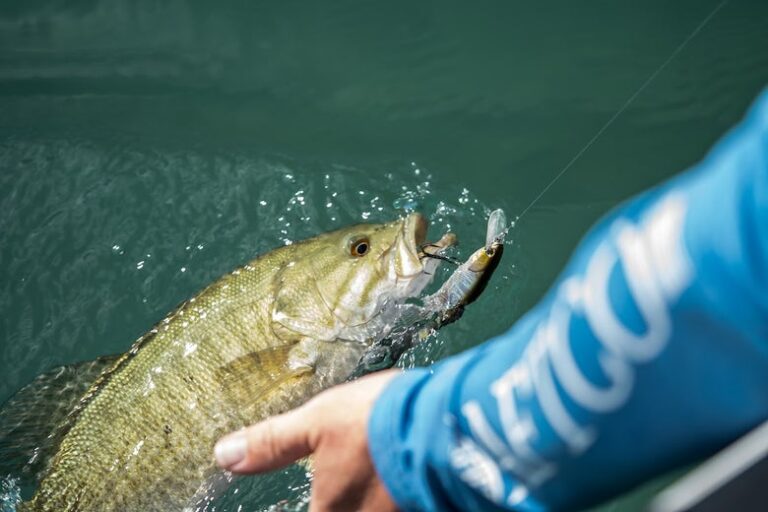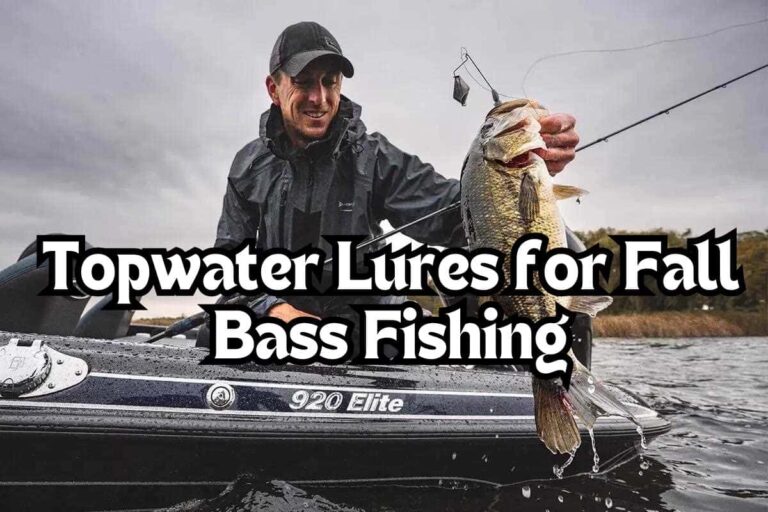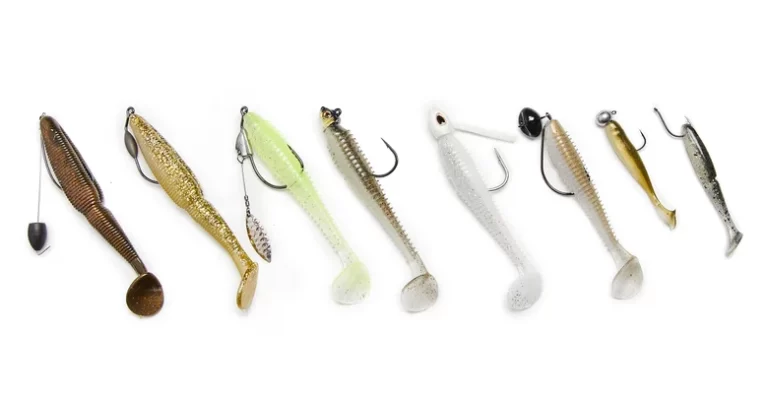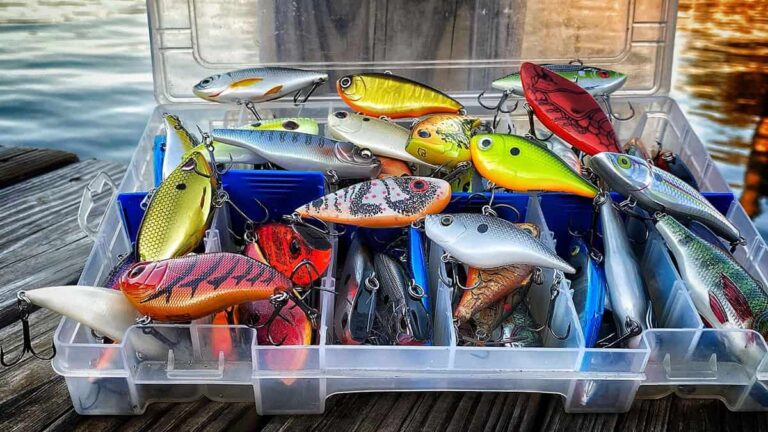How to Fish a Flipping Jig
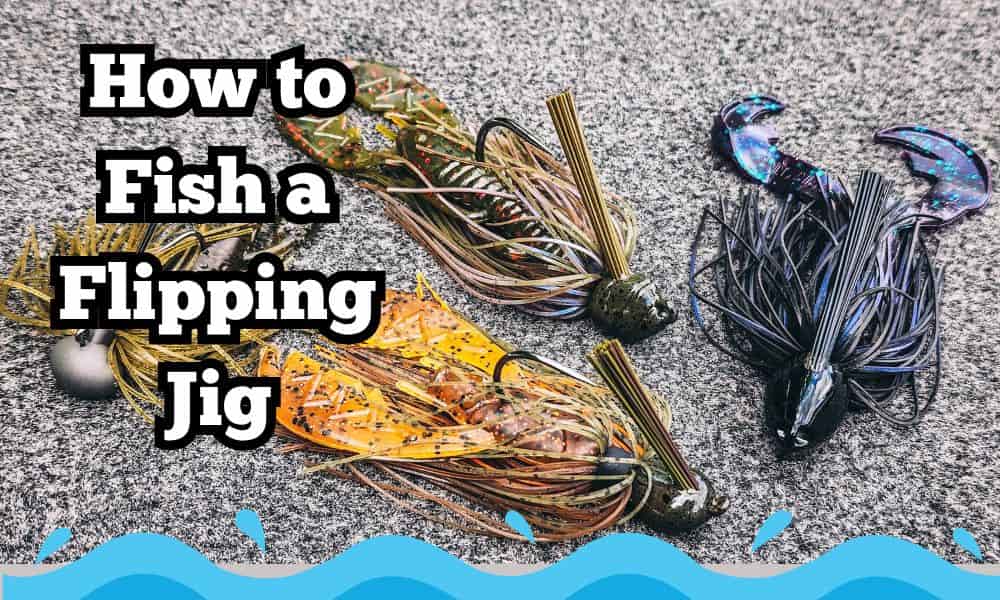
There are a bunch of different styles of bass jigs, and each one of them has a specific purpose. Each one is designed to be fished in one specific situation.
And each requires a different approach when fishing it. The flipping jig is probably the most classic style of bass jig that has been around for decades. It is a lethal tool for catching bass when used correctly. So let’s go over exactly how to fish a flipping jig.
Purpose of a Flipping Jig
Like I said above, each jig style has a specific purpose. The flipping jig is designed to come in and out of thick cover extremely well without snagging.
It has a round or pointed head that helps it glide through structure without grabbing onto anything and a thicker weed guard than all other types of jigs.
Getting a bit more specific, the flipping jig is meant to be fished in and around very shallow structure like wood, docks, and grass.
Rather than making traditional, long casts and retrieving the bait over a large amount of water, you simply use a short flip cast to the shallow cover and work the flipping jig over a very small, high percentage location.
How to Flip Cast
This part is probably the easiest in my opinion. Of course it still takes some practice to get accurate and confident, but it is very simple.
The first step to good flipping is to loosen the spool tension knob on your baitcasting reel. I recommend loosening the tension pretty much all the way, as long as you don’t screw the knob completely off the reel. Because you are only making short, soft casts, you don’t need to worry about bird’s nests or tangles.
And then the flipping technique is simple. Just use an underhand motion with your rod to swing the jig out in front of you. Then release your thumb from the spool, letting the jig flip and glide forward towards the target.
That’s really all there is to it. Again, it will take a little bit of practice, but you should get the hang of it after 10 minutes or so.
How to Retrieve the Flipping Jig
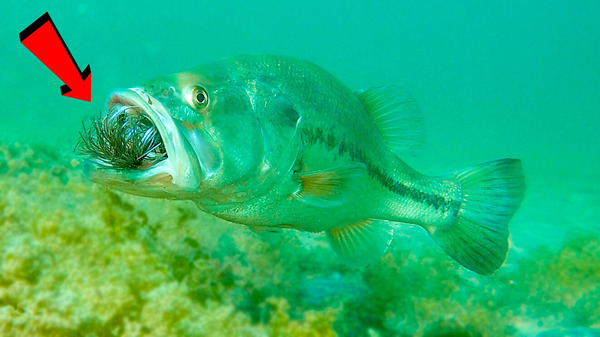
Retrieval is also super simple. You usually are only fishing the flipping jig through a few feet of water, so there’s almost no wrong way to retrieve it. But the standard retrieve is to just flip to your target in and around a piece of cover.
Then let the jig sink to all the way to the bottom. Then either drag it a couple of feet or give it a few hops along the bottom. Of course, you will also have to drag and shake it over some of the branches and limbs that you are casting into.
Once the jig gets a couple feet out of the intended cover, just reel it back in and repeat as fast as you can.
When to Use a Flipping Jig
Really anytime you have lots of shallow cover, a flipping jig is a great option. Even in the winter months when the water is very cold, there is usually still a few bass up in the shallow cover, so you can still catch them on a jig.
So pretty much 12 months out of the year is a great time to be flipping a jig.
However, this technique does seem to work better if you have either stained or muddy water. Stained water is really the perfect conditions because you don’t have to be quite as thorough flipping to each piece of cover, but bass aren’t as spooky and will smoke the jig.
It definitely will still work in very clear water, but bass will often pull off the super shallow cover when there is more than 3-4 feet of visibility which can make it a bit hard to flip directly to them.
With that being said, I always have a flipping jig tied on no matter where I am fishing because it is at least worth giving a shot even in crystal clear lakes and ponds.
So the short answer is that you should use a flipping jig anytime you have shallow cover up near the bank.
Advantages of Flipping Jigs
- Compact and natural profile
- Secondary action from the undulating skirt
- Extremely weedless because of thick weed guard
- Very high sensitivity because of the compact and singular body design
- Super fun to use
Flipping Jig vs Texas Rig
A lot of guys just feel like they are better off using a Texas rig all the time. And the Texas rig is a phenomenal rig, but there are pros and cons of it compared to a flipping jig.
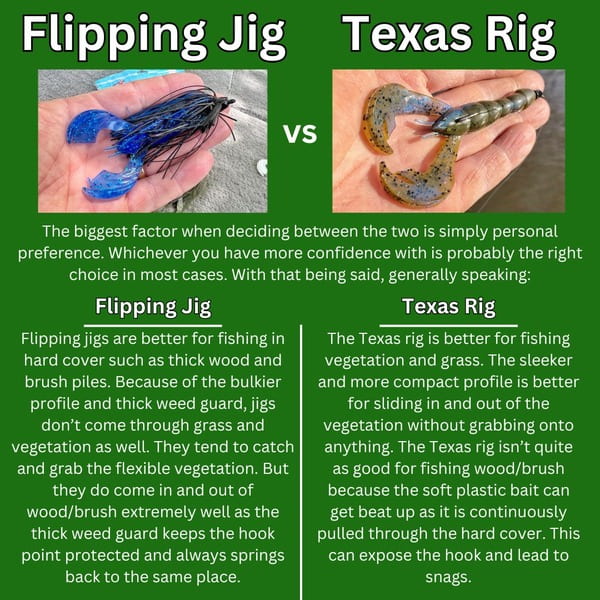
Flipping Jig Trailers
There are two styles of trailers that you can use with a flipping jig. I guess technically, you can use whatever you want, but pretty much every jig fisherman will only fish these two trailer styles.
Simply put, they just work better than any thing else. These two trailer styles are flapping craws and dead action craws.
Flapping Craw Trailers:
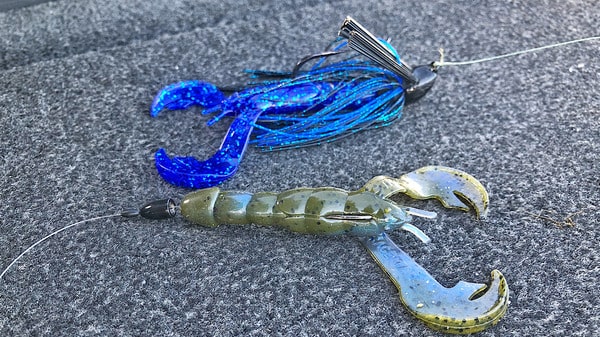
Flapping craws are baits like the Crackin’ Craw or the Rage Craw. These soft plastic trailers have lots of flapping or swimming action from the claws.
This action has a lot of vibration and resistance in the water which does a couple of things.
First, it slows down the fall of the jig almost like a parachute. Second, the action and vibration gets the attention of bass and helps them find it in muddier water.
I prefer these flapping trailers in very muddy or very shallow water.
Dead Action Craw Trailers:
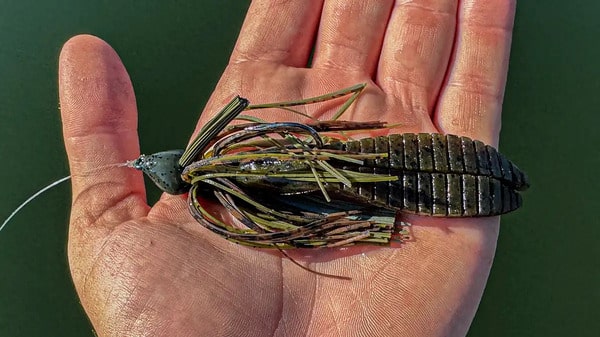
Dead action craw baits are things like chunk baits or more flat claw plastics. The claws of these crawfish plastics don’t flap or swim at all in the water.
The do have some movement as you hop or shake the jig around, but they have essentially zero vibration or resistance. However, they do look a bit more natural in my opinion.
I prefer these dead action trailers in stained to clear water, or if the water is a bit deeper.
Picking the Right Flipping Jig
There is pretty much an unlimited number of different flipping jigs on the market, and it can be overwhelming trying to pick the perfect one.
But to be honest, there is no “perfect one”. We do have a quick article here, Best Flipping Jigs, that goes over our top 3 recommended flipping jigs. So if you just want to keep it simple, go with one of those options. But there is one think that I look for in a flipping jig.
I prefer compact flipping jigs over the full sized versions, and a lot of companies offer these compact version of their flipping jigs.
The compact jigs have a bit smaller profile with a shorter skirt and smaller sized hook. The compact flipping jigs have always out produced the full sized jigs for me, so I always recommend guys go with the compact versions.
Colors for Flipping Jigs
There’s no need to over complicate the colors. If you watch any pro angler, they are all using pretty much the same colors.
- Black/Blue: A plain, all black jig will work just fine as well, but most guys use a black/blue color. This is going to be your muddy water jig because the black and blue color has a very high contrast in muddy water and is much more visible.
- Brown: If you are fishing around a lot of rocks where bass are most likely eating lots of crawfish, brown is always a great choice.
- Green Pumpkin: This is your clear or stained water jig. Green pumpkin is probably the most universally natural lure color. It could be a crawfish, bluegill, baby bass, frog, or really anything else.
Gear Setup
Flipping a jig is exclusively a baitcasting technique. A spinning rod just won’t have the power you need to pull bass out of the cover. And a spinning reel won’t have the soft, precise casting ability that you need to quietly drop your jig where it needs to be.
Anything from a medium-heavy to a heavy power rod will work just fine. Most guys use a heavy power flipping rod, but I actually prefer a medium-heavy most of the time. So try out both and see which one you like better.
You can flip a jig with both braid or fluorocarbon line. Most of the time, if I am fishing a bit clearer water or strictly flipping wood, I will use fluorocarbon. But if I am fishing very muddy water or primarily flipping grass and vegetation, I will use braided line. I like 17 lb fluorocarbon and 40 lb braid.
Reeling this In
The flipping jig is a versatile and effective tool for bass fishing in shallow, heavy cover. By mastering the flip cast, understanding the appropriate retrieves, and selecting the right jig, trailer, and color combinations, anglers can significantly increase their chances of landing quality bass.
Whether in clear or muddy water, and throughout much of the year, knowing how to fish a flipping jig offers a compact, natural presentation that bass find irresistible. With the right gear and a bit of practice, this technique can become a go-to strategy for any serious bass angler.

